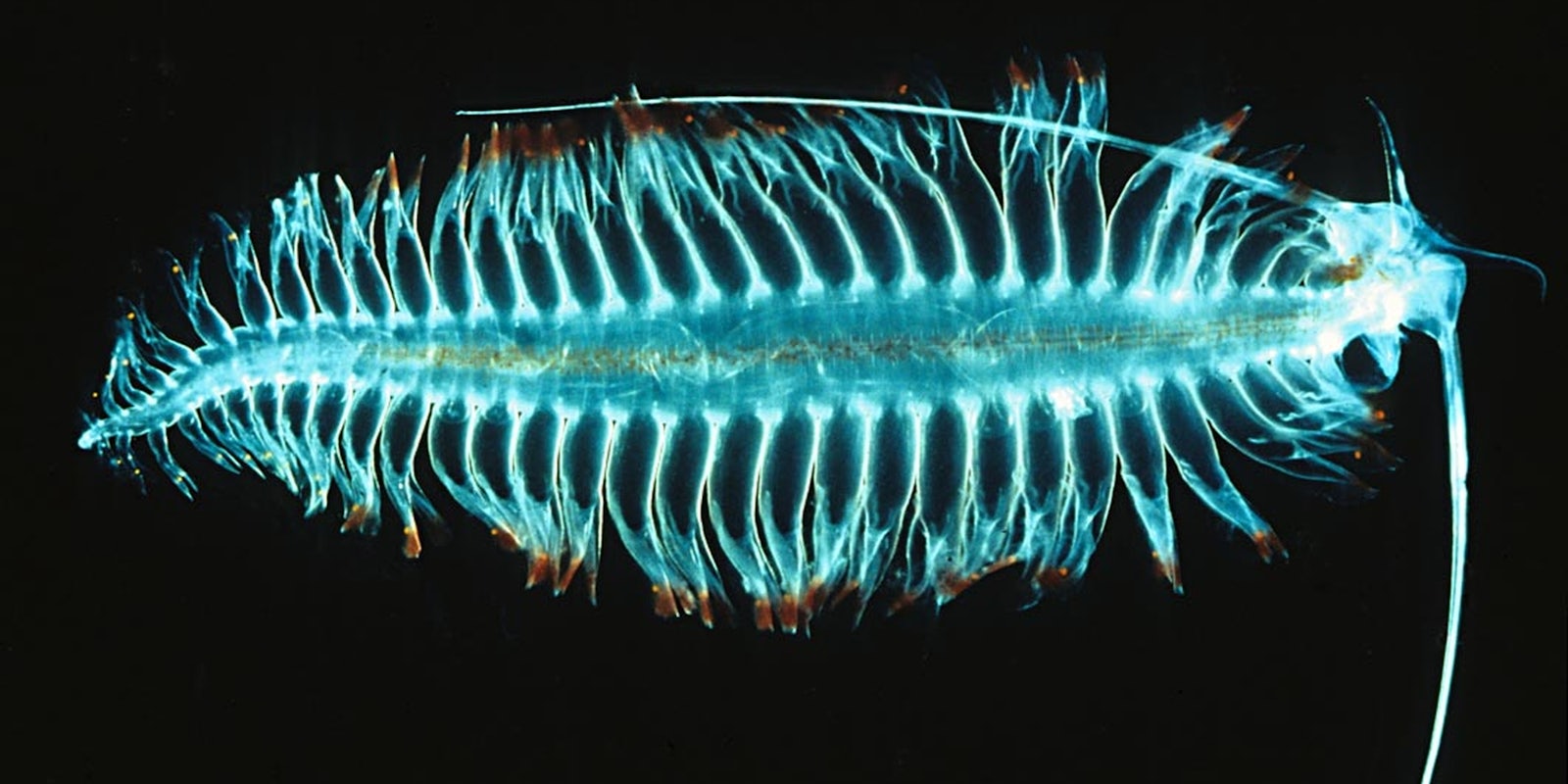We know it’s easy for people to get behind pseudo holidays like National Martini Day and National Burger Day.
But hear us out on why International Polychaetes Day is just as awesome.
Polychaete (pronounced paw-lee-keet) worms are a class of the annelid (meaning segmented) worms that primarily live in the ocean. These critters, also known as bristle worms, have been around since the Cambrian era and currently boast at least 10,000 species.
On July 1, several museums around the world celebrated the first International Polychaete Day in honor of the worms.
The day was chosen to recognize biologist Kristian Fauchald, who devoted 36 years of his life to studying the worms at the Smithsonian’s National Museum of Natural History before dying of a heart attack in April. July 1 would have been his 80th birthday, according to The Smithsonian. In his memory they posted an article containing 14 facts about polychaete worms, including details on some species bizarre sex lives and the fact that other species can last 96 hours without oxygen.
Over the last few days, people have been tweeting about their favorite polychaetes, posting photos and facts about the beautiful, terrifying, and wholly under-appreciated worms.
Why I Love Polychaetes by Karen Osborn for #InternationalPolychaeteDay https://t.co/WT8Wek9fdj @NMNH @InvertebratesDC pic.twitter.com/FGbgHv9XZe
— The Ocean Portal (@OceanPortal) July 1, 2015
#WormWednesday & #InternationalPolychaeteDay Here’s my nemesis when I’m searching for stomatopods. A bearded fireworm pic.twitter.com/hCIgxmxyG3
— Amanda Franklin (@neptsnecklace) July 1, 2015
https://twitter.com/MESL_Bath/status/616206236732755968
Its #InternationalPolychaeteDay so here are some Christmas tree worms :-) :-) pic.twitter.com/1sa9fn4xZr
— Dr Ceri Lewis (@CezzaLew) July 1, 2015
Did you know Lamellibrachia can live for 250 Years? Join us for #InternationalPolychaeteDay http://t.co/T6xXIbF4pS pic.twitter.com/UkzbksxXCP
— NMNH Invert Zoology (@InvertebratesDC) June 30, 2015
The nudibranch Diaulula sandiegensis with a commensal scaleworm for #InternationalPolychaeteDay #Humboldt pic.twitter.com/dwXgKecedC
— Mike Kelly (@MSidKelly) July 1, 2015
FANTASTIC 14 facts about marine worms for #InternationalPolychaeteDay ! http://t.co/7lBS16oh0g pic.twitter.com/DJpdIoGdHI
— NMNH Invert Zoology (@InvertebratesDC) July 1, 2015
https://twitter.com/RudkinDave/status/616251298430779392
Happy #InternationalPolychaeteDay! Let these amazing creatures make you feel all worm & fuzzy: http://t.co/jUj6lI5N7A pic.twitter.com/e2AiY0sCAP
— BHL (@BioDivLibrary) July 1, 2015
The biggest polychaete, the bobbit worm, can reach 10 feet long! http://t.co/UtKiGXxqlY #InternationalPolychaeteDay pic.twitter.com/gxNxKfkjKx
— The Ocean Portal (@OceanPortal) July 1, 2015
#InternationalPolychaeteDay pic.twitter.com/JKBExv9G81
— Marie Nordström (@MarieCNordstrom) July 2, 2015
Celebrating a rare polychaete “squidworm” for #InternationalPolychaeteDay! We’ve seen many on https://t.co/Ajj54ZgxUo. pic.twitter.com/FjXW9sJ4DT
— E/V Nautilus (@EVNautilus) July 2, 2015
Learn more about polychaetes from biologist Karen Osborn and blogger Maria Chiochios.
Image via uwe kils/Wikimedia (CC BY 3.0)


